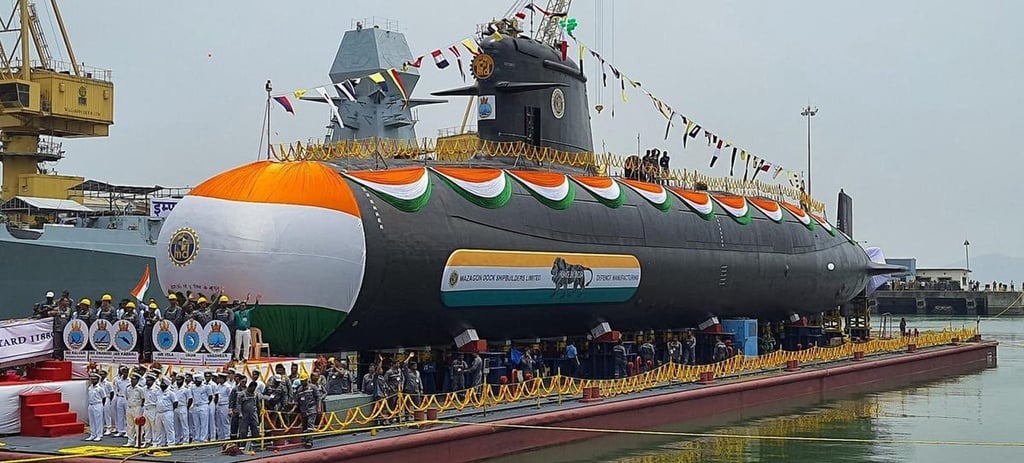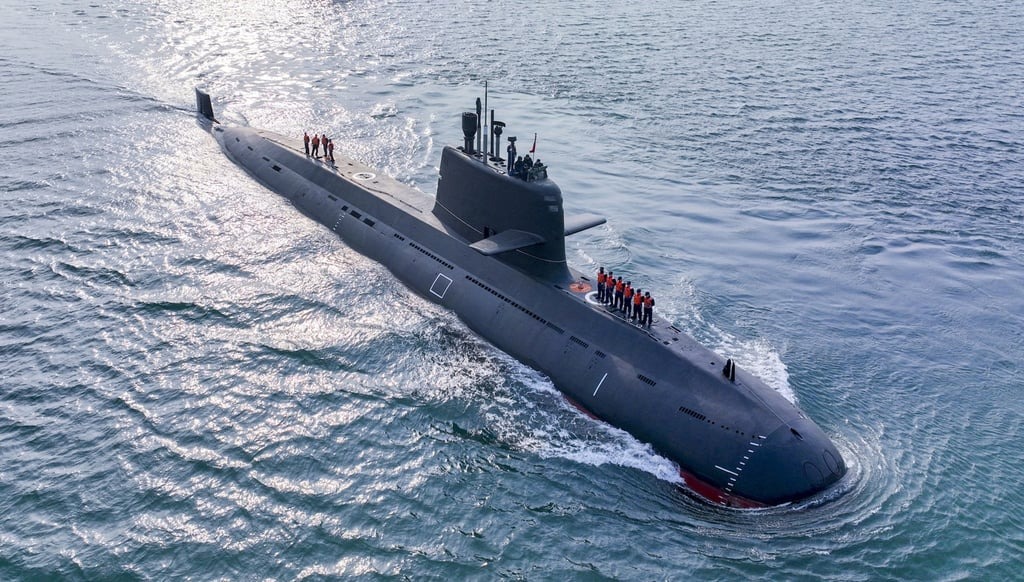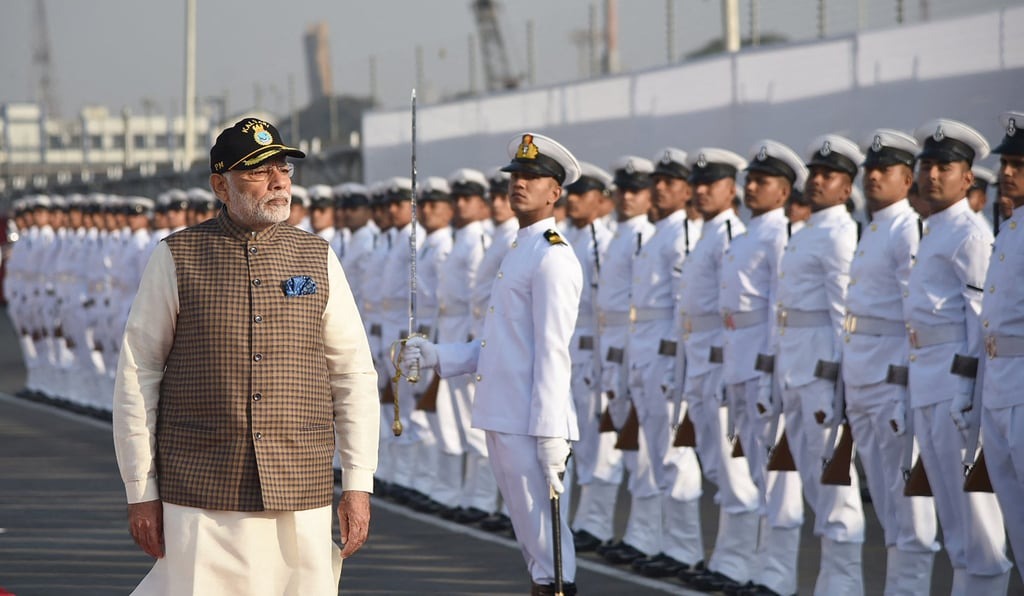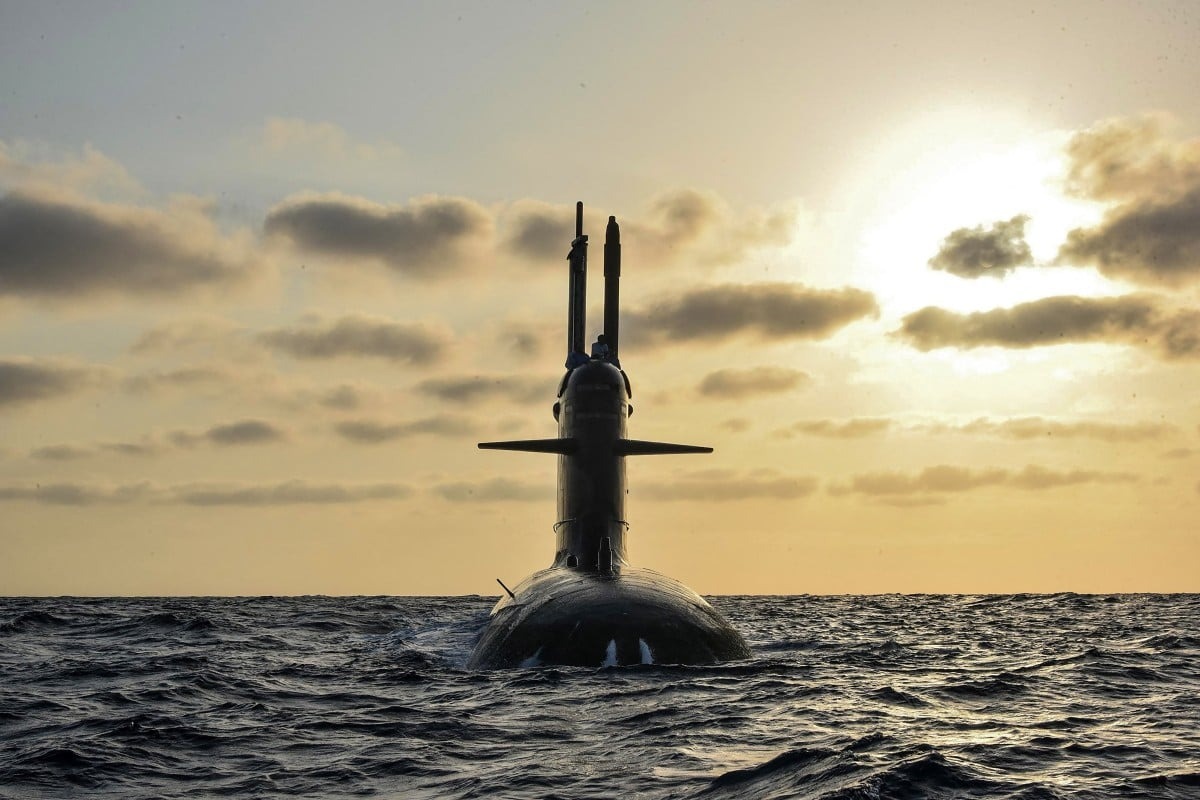La red de refugios de la base RAMBILLI tiene como objetivo proporcionar a los submarinos de la India una entrada a la Bahía de Bengala que no pueda ser detectada por satélites. Esta nueva base naval de última generación, pone en evidencia las ambiciones de India de expandir su flota submarina y de esa manera contrarrestar la creciente influencia de China en el Océano Índico.
The base, located near Rambilli village, will serve as a hub for India’s warships and nuclear-powered submarines, according to local media, enhancing its ability to project power in an increasingly contested region.
The facility will support India’s fleet of nuclear-powered ballistic missile submarines, including the new INS Aridhaman, according to Walter Ladwig, a senior international-relations lecturer at King’s College London who specialises in South Asian security.
“It would enhance the [navy’s] ability while maintaining operational secrecy for their nuclear submarine fleet, which is crucial for a secure second-strike capability.”
The commissioning of the base at Rambilli coincides with plans to introduce the INS Aridhaman, India’s third nuclear-powered submarine equipped with nuclear-tipped ballistic missiles, later this year. The 7,000-tonne vessel is larger than its predecessors, the INS Arihant and INS Arighaat, which currently form the backbone of India’s nuclear deterrent at sea.
India’s new nuclear submarine base
It comes against the backdrop of escalating competition between New Delhi and Beijing for strategic influence in the Indian Ocean and broader Indo-Pacific region.
Located around 50km (31 miles) from the Eastern Naval Command in Visakhapatnam, the Rambilli base is designed with underground tunnels and a network of pens to discreetly house submarines.
This configuration allows vessels to access the Bay of Bengal undetected by spy satellites, enabling them to carry out deterrent patrols towards the Malacca Strait and beyond. The first phase of the base, code-named Project Varsha, is nearing completion, according to The Times of India.
Talks on the submarine base began as far back as 2014, according to Mayuri Banerjee, a research analyst at the Manohar Parrikar Institute for Defence Studies and Analyses’ East Asia Centre in Delhi, who emphasised the development’s importance.
“New Delhi sees the Indian Navy playing an important role in India’s security and regional security and stability,” she said. “The naval base will enhance New Delhi’s maritime deterrence posture as well as project India as a maritime power.”

Banerjee noted the growing footprint of the Chinese navy, which has expanded its presence in the Indian Ocean in recent decades through overseas ports and other outposts. But she cautioned that a “qualitative comparison” between the naval capabilities of India and China would require a deeper assessment of their respective strategic outlooks and perceived threats.
India’s naval ambitions extend beyond Rambilli. It is also upgrading its Karwar base in Karnataka on the country’s west coast under Project Seabird. Following the completion of the project’s first phase in 2011, the base can now accommodate 10 ships. Work on phase two, which began in 2017, is still under way and aims to expand its capacity to berth 32 ships and submarines, alongside 23 auxiliary vessels.
The two bases have complementary roles, according to former submariner Commodore Anil Jai Singh, vice-president of the Indian Maritime Foundation. Karwar is a comprehensive naval base housing aircraft carriers and destroyers, while the new base in Andhra Pradesh is specifically for nuclear submarines.
“Every country which operates SSBNs has specific bases for support and maintenance. Security and secrecy needs to be guaranteed,” he said, using the abbreviation for ballistic missile submarines.

China’s dominance
Strategically, India’s nuclear submarine programme aims to address a capability gap with China, whose navy is the largest in the world with at least 350 ships.
According to the US Congressional Research Service, China’s submarine force is projected to grow to 76 submarines by 2030, including eight nuclear-powered ballistic missile submarines, 13 nuclear-powered attack submarines, and 55 diesel-electric submarines.
“Facilities like Rambilli will help by magnifying the operational effectiveness of India’s nascent nuclear submarine fleet,” he said.
It takes time to build, and nobody shares that technology – you need to develop it yourself – Commodore Anil Jai Singh, former Indian submariner
Commodore Singh stressed that India’s approach was focused on strategic capability rather than numerical parity.
“The Indian navy is going to be structured in a way that ensures it always retains a combat edge in its area of operation – the Indian Ocean – so that no other navy can come in and bully us,” he said.
“We don’t need to match submarine for submarine [with China]. We need to evaluate our abilities, concepts of operation, how we deploy the platforms we have, and what sort of capabilities are required to ensure that every base is covered.”
Singh said that continuous sea-based deterrence required at least four nuclear-powered ballistic missile submarines – a capability akin to the naval forces of France and Britain that India was working towards.
He also highlighted the importance of nuclear-powered attack submarines to escort and protect ballistic missile submarines during their patrols.
“It takes time to build, and nobody shares that technology – you need to develop it yourself,” he said. “But India needs it not only to counter China but also for our own ability to project power in the Indian Ocean and its adjoining seas.”

“If China wants maritime power status, it needs to have a big presence in the Indian Ocean for Atlantic access, but it must also protect its own waters in the South China Sea,” he said. While China has more nuclear-powered ballistic missile submarines, Singh argued that capability, not quantity, was the defining factor in India’s ability to confront its regional rival.
Atul Kumar, a fellow at the Observer Research Foundation’s strategic studies programme in Delhi, described the Rambilli base as a crucial addition to India’s naval infrastructure.
INS Arihant-class submarines had helped the Indian Navy gain valuable experience in operating nuclear-powered vessels, a process that was set to accelerate with the commissioning of the INS Aridhaman, he said.
However, Kumar pointed out that India’s nuclear submarine programme also faced challenges.
Ballistic nuclear submarines need nuclear-powered attack submarines to protect them from adversaries during patrols, but “India’s weakness at present” was a lack of such vessels in its inventory, he said.
Kumar added that there was a need for “further testing” of India’s sea-launched ballistic missiles, such as the K-4, which have so far only been trialled from submerged platforms rather than from submarines themselves.
Fuente: https://www.scmp.com


